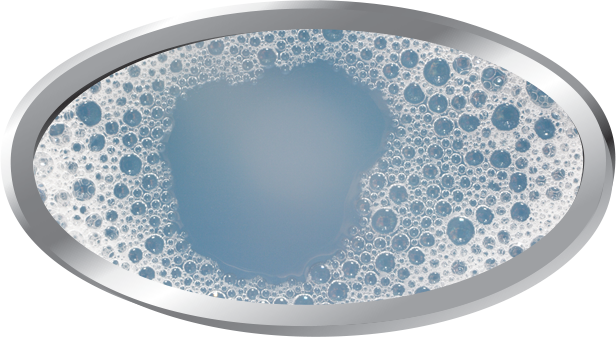Selecting the Right Defoamer for Your Specific Application Requirements
Choosing the suitable defoamer for certain application needs is a nuanced procedure that demands careful factor to consider of several elements, such as the foam tool, operating, and type problems. Understanding the subtleties of defoamer efficiency-- including rate and determination-- while also representing regulative and environmental variables is crucial. In addition, participating in tests and seeking advice from producers can provide valuable understandings. Browsing these intricacies can be complicated, and the effects of a poor selection may be substantial. What strategies can be used to ensure an optimal option?
Recognizing Foam Development
Foam formation occurs when gas is trapped within a liquid, producing a stable framework of bubbles. This phenomenon can considerably influence numerous industrial procedures, especially in industries such as food manufacturing, drugs, and wastewater treatment. The presence of foam can impede mixing, reduce product high quality, and even cause operational ineffectiveness.
Foam generally creates as a result of a mix of variables, including surface-active representatives, anxiety, and the characteristics of the fluid phase. Surfactants reduced the surface area tension of the liquid, facilitating the development of bubbles that can stabilize and integrate. Anxiety, whether from mechanical stirring or gas intro, enhances bubble formation, causing boosted foam quantity.
Comprehending the mechanics of foam development is critical for markets aiming to enhance their procedures. By recognizing the details conditions that promote foam generation, companies can implement strategies to alleviate its impacts. This knowledge lays the foundation for picking suitable defoaming agents that efficiently target the special challenges positioned by foam in various applications. A thorough understanding of foam development is important for boosting effectiveness and keeping product integrity across numerous sectors.
Kinds Of Defoamers Available
Various types of defoamers are readily available to resolve the difficulties posed by foam in commercial applications. defoamers. Broadly identified, defoamers fall into 3 classifications: silicone-based, non-silicone-based, and natural defoamers
Silicone-based defoamers are renowned for their effectiveness and security across a wide variety of temperatures and pH degrees. They are usually made use of in applications where solid foam reductions is needed, such as in adhesives, finishings, and paints. Their low surface tension enables quick foam collapse.
Non-silicone-based defoamers, commonly made from natural substances, offer a choice for applications delicate to silicone residues. These defoamers can be more split into polyether and ester types, each tailored to satisfy specific formula demands. Non-silicone defoamers are frequently made use of in food handling and individual care products due to their compatibility with various formulations.
All-natural defoamers, stemmed from plant or animal sources, are obtaining traction as a result of their green profile. These products are particularly appealing in applications where governing conformity and sustainability are vital, such as in agrochemicals and biotechnology.
Selecting the right kind of defoamer is critical for enhancing efficiency and guaranteeing compatibility with details applications.
Secret Application Factors To Consider
When selecting a defoamer, it is crucial to take into consideration the particular application demands to ensure optimum performance. defoamers. Different markets have distinctive requirements, such as food processing, pharmaceuticals, or wastewater therapy, and each application might require one-of-a-kind defoaming residential properties
Trick elements to evaluate consist of the tool this link in which the defoamer will be made use of, whether it is water-based, oil-based, or a mix thereof. The temperature level and pH degrees of the application can likewise greatly influence the effectiveness of a defoamer. In addition, compatibility with various other chemicals existing in the system is essential to avoid damaging reactions that could endanger efficiency.
One more vital consideration is the foaming behavior of the details system. Understanding whether the foam forms quickly or gradually can lead the selection of a defoamer that targets the root reason properly. Furthermore, the wanted speed of defoaming can affect the choice, as some applications call for rapid action while others may endure slower defoaming procedures.
Last but not least, regulatory and environmental factors to consider need to not be neglected, especially in markets with rigorous compliance requirements. Choosing a defoamer that aligns with these aspects makes certain both efficiency and safety in the application.

Efficiency Screening Techniques
Examining the performance of a defoamer needs a systematic strategy to screening that precisely gauges its performance in specific applications. Different performance screening methods can be utilized to determine the ideal defoamer for a provided solution.
One typical method is the bubble test, which evaluates the defoamer's ability to reduce foam volume in time. This examination includes generating a stable foam and after that including the defoamer to observe the price of foam collapse. One more approach is the dynamic foam examination, where foam is created under controlled problems to simulate real-world application situations. This approach offers understandings into just how the defoamer carries out under varying shear conditions.

Eventually, selecting the suitable performance testing method depends on the certain application and the sort of foam being attended to. Each technique provides useful information that can lead formula adjustments and enhance the performance of the defoamer in sensible applications.
Best Practices for Option


Following, consider the defoamer's performance in regards to rate of action and persistence. A quick-acting defoamer might go to the website be needed for processes where quick foam reductions is critical, while a more persistent solution could be needed for long term foam control. Additionally, evaluate the environmental impact of the defoamer, including its biodegradability and any regulatory conformity demands.
Conduct tests with selected defoamers to identify their efficiency in real-world conditions. This step is important to verify that the selected item satisfies efficiency assumptions. Lastly, seek advice from with makers or providers for technological support and advice, as they can give beneficial understandings into product solutions and application techniques. By sticking to these best techniques, you can boost foam control performance and guarantee the durability of your procedures.
Final Thought
In recap, choosing the suitable defoamer demands a detailed assessment of numerous aspects, consisting of foam type, medium, operating problems, and ecological considerations. Recognizing the distinct attributes of foam formation and the offered defoamer alternatives is critical.
Selecting the ideal defoamer for details application needs is a nuanced procedure that requires careful factor to consider of several aspects, such as the foam tool, kind, and operating problems.Selecting the right defoamer is vital for attaining ideal efficiency in foam control applications. A quick-acting defoamer might be necessary for processes where fast foam suppression is essential, while a more consistent formula might be needed for prolonged foam control.In summary, picking the suitable defoamer demands a detailed analysis of different elements, consisting of foam kind, tool, operating problems, and ecological factors to consider. Comprehending the unique qualities of foam development and the offered defoamer choices is click here for info important.